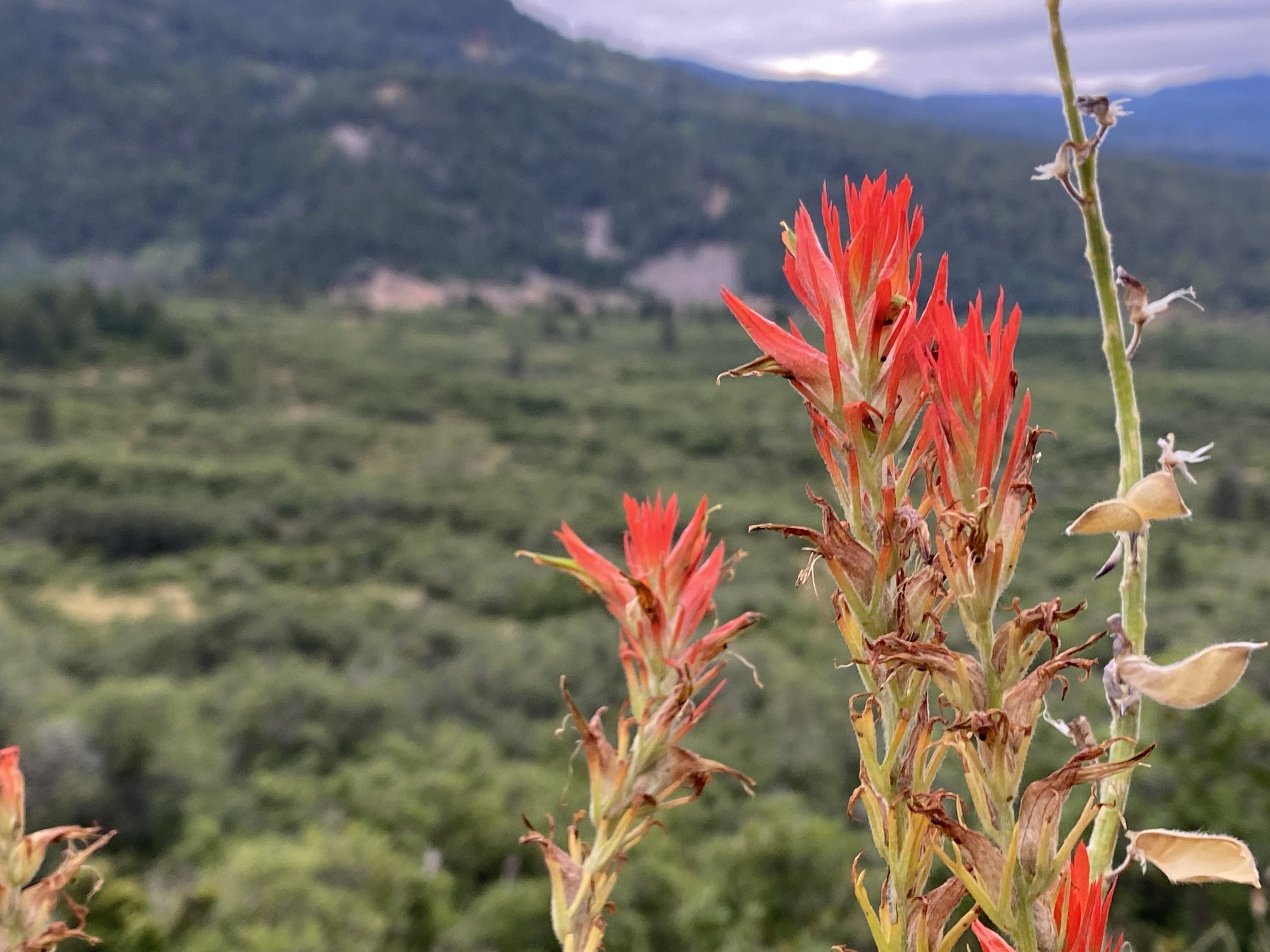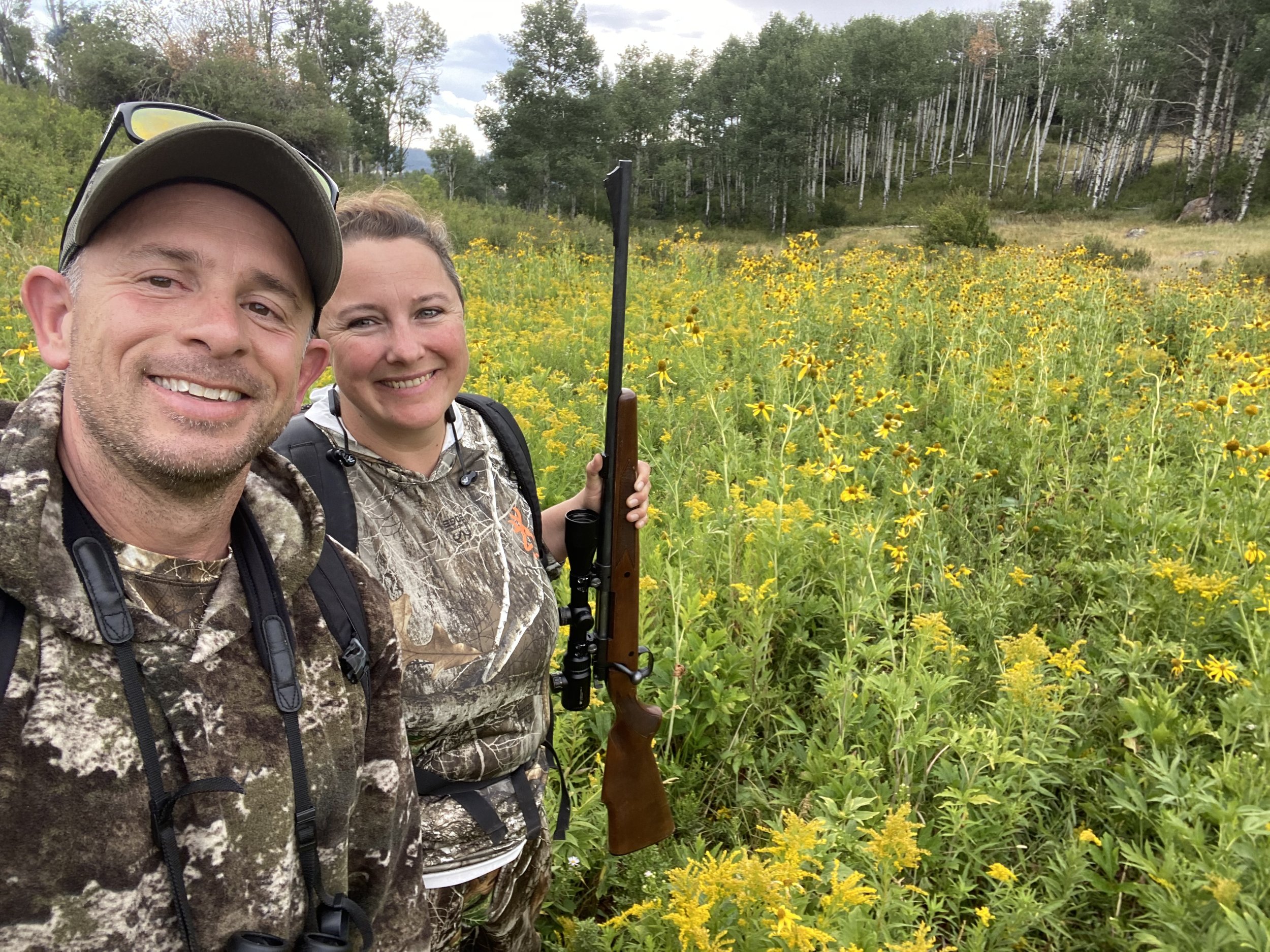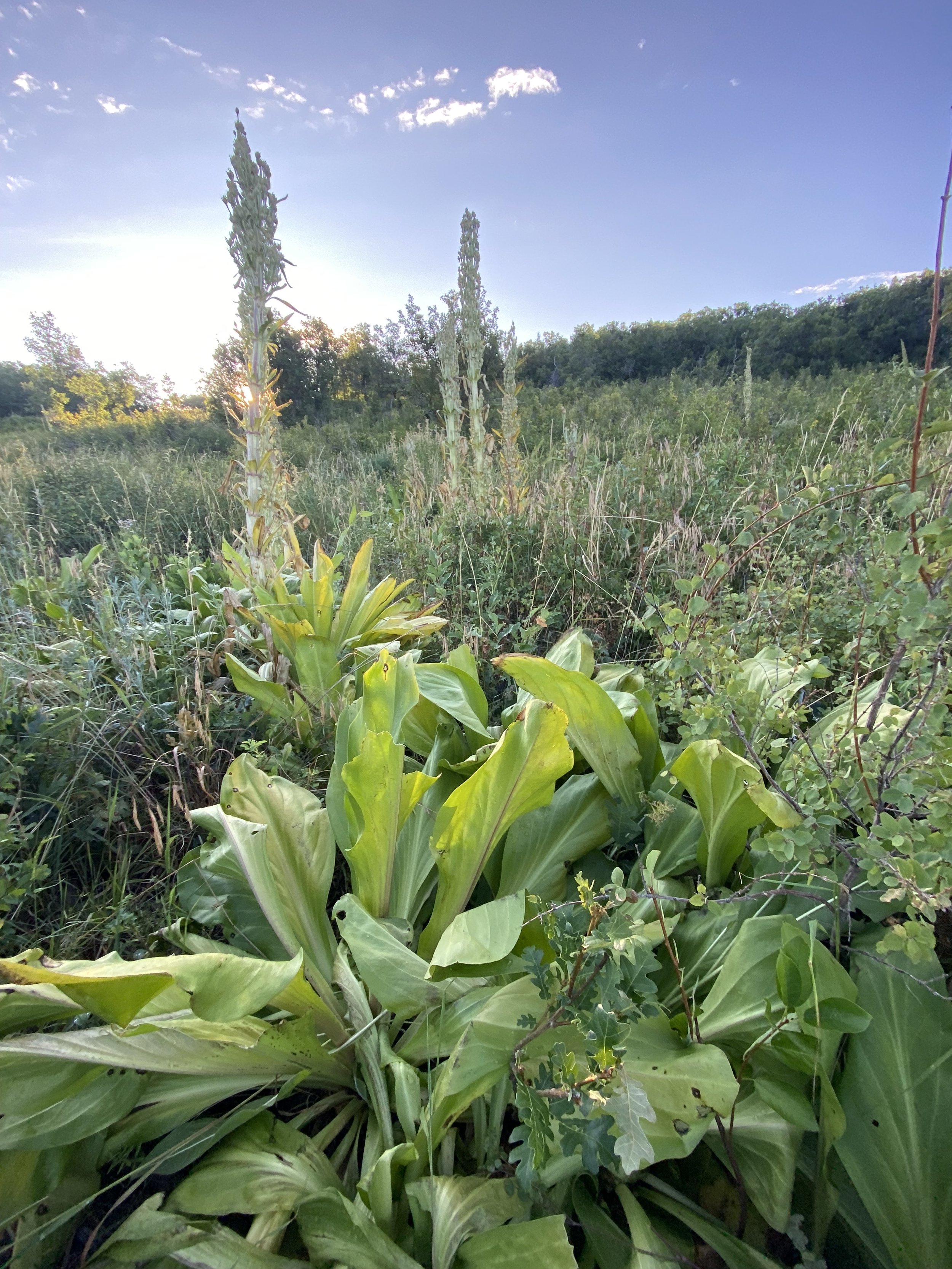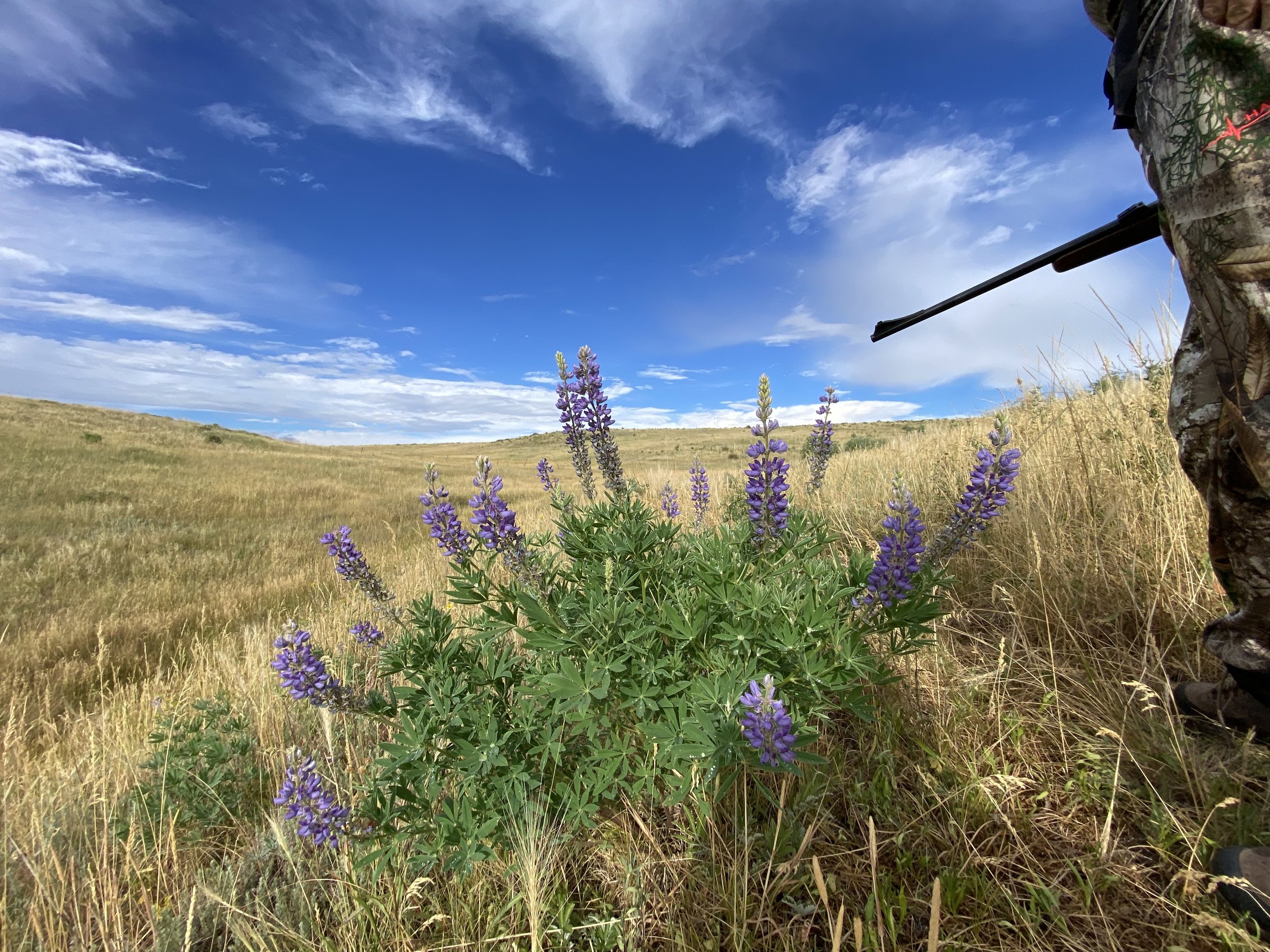Bear Hunt Day 1
Earlier this month, my partner Sarah (wildlife artist, hunter, mom) and I hunted black bears in the Rocky Mountains. This is the first of series of posts describing the hunt and this magical landscape. We do kill a large adult black bear and harvest the meat, hide and bones. If this is triggering for you, please skip. Thanks for reading.
Heliomeris multiflora
Day 1: We arrived in August with the Perseids, landing in a desert teeming with stink beetles, diamondbacks and roadrunners.
We collected the 30-06 and left Sarah’s kids with their grandparents.
At the Albuquerque municipal range, Sarah fired enough rounds to feel confident walking into predator territory, and then we followed the Rio Grande upriver to the foothills of the San Juan Mountains.
We stayed in Chama, a tourist railtown on the Colorado border where we could shower off the dust of the trail. Plush accommodations for bear hunters.
We woke at 4am each morning and drove to the Edward Sargent Wildlife Management area — 20,000 acres, named after a local sheepman who’d overgrazed his flocks on this land. Ten New Mexicans draw bear tags for this unit each year, but we never saw another hunter.
Castilleja miniata
That first morning, we had the place to ourselves.
Crossing the prairie, mule deer eyes glowed in our headlamps. Nighthawks hunted the hour before sunup. Males divebombed us in the twilight, swooping and flexing their wings, so the air vibrated and boomed as they banked away, showing off for their mates. The roar of their wings sounded like a bear growling in the dark.
The sky lightened and I noticed the landscape still held the lushness from our scouting trip in June, when Blue Flag irises and Prairie Smoke bloomed purple-pink. Now the swales bloomed yellow - Showy Goldeneye, Curlyhead Goldenweed, and Cutleaf Coneflower.
The fruit we found flowering in June was now ripe. Wax Currant browsed to nubs. Spiky Black Hawthorn bushes holding fruits higher than a bear or elk could reach. Chokecherries and snowberries at peak abundance.
Symphoricarpos rotundifolius
As the sun rose over the ridgeline, we walked into a stand of monument plants, dozens of flowering stalks standing taller than me. They’re also called Elkweed or Deer’s Ears; the ungulates devour them. The huge gentians grow between twenty to eighty years, storing energy in their roots, waiting for a synchronous flowering event where they all bloom. In the morning light, standing in a grove of giant flowers, I felt like we were being greeted or possibly observed by the keepers of this place.
Frasera speciosa
We followed game trails through Gambel Oak thickets, squat, brushy trees loaded with green acorns. As we passed through tunnel-like trails, we could see recent animal activity – broken limbs, browsed stems, elk and bear scat, new prints in mud. We found rocks and logs overturned, where a bear had been foraging for insects. I could tell we were not far behind our quarry. I took each step anticipating a jump-scare encounter with one of the “problem bears” the New Mexico Dept of Game and Fish often released into these hills.
Sarah smells bear shit while I take photos and tease her.
There’s an internal conflict on a hunt like this, between desire and fear.
Did we want an unexpected bear encounter, or not?
Dusky Grouse exploited the building tension with perfect timing. The chicken-sized partridges would explode from a hiding spot, close enough to make my heart skip, and send me back on my heels.
Sarah took scent seriously, insisting we wash the whole week with scent-blocking shampoo, washing our hunting clothes in scent-erasing detergent, storing our camo in scentless bags full of dried plants, wiping everything down with scent-erasing wipes.
Nearly undetectable,we walked amidst herds of elk as we climbed out of the prairie, up into the aspen groves. Eventually a cow would catch our scent and alarm calls would ring out. We never saw a bull, but we could hear them starting to sing for mates.
Chrysomyxa arctostaphyli
The flora changed every half mile, shifting with the topography and moisture. At the highest elevations, we found Engleman Spruce and parasitic Witches Broom Rust on almost every tree. I learned that the golden parasitic boughs were part of a multispecies pathology passing infection between the spruces and the bearberry shrubs in their understory.
Bear effigy
I started to notice the rocks more as we climbed higher, stones crusted with blue crystals, honeycombed chunks of black stone, shining pieces of chalcedony and quartz, flecks of what looked like turquoise. I filled my pockets, obsessed.
That fascination and desire would shape the course of the hunt..
Lupinus argenteus








